Precipitation and Earth’s Radiation Budget
Overview
Precipitation comes from clouds, which have a complicated impact on Earths’s radiation budget. The rain and snow that fall on land have quite a significant impact, too, but in less direct ways, such as supporting plant growth and the formation of ice sheets which change the reflectivity of the Earth’s land area.
Land Plants
The wind moves water evaporated from the oceans over land, where precipitation supports plant and animal life. Vegetation cover on land has significant impacts on the Earth’s radiation budget:
- Since plants reflect most sunlight not used in photosynthesis, plants alter the land surface reflectance and cool the land during the day. The cooler land radiates less thermal radiation at night, helping to slow the nighttime cooling, lowering the range of daily temperature changes.
- The water within the plant cell’s also moderate temperature change due to its high specific heat (see the Radiation Budgets section of the Blackbody Radiation software). Plants lose heat more slowly at night than bare rock and soil surfaces.
- Finally, plants evaporate and transpire water vapor, a greenhouse gas, so more heat is retained in the nighttime atmosphere compared to a drier one. So one of the direct results of precipitation on land is the support of plant life, which, in turn, supports animal life.
Imagine the world if it didn’t have plants on land. Well, we didn’t have them for much of Earth’s existence. Non-vascular land plants did not evolve until roughly 500 million years ago, and vascular plants arrived about 50 million years later. That means land plants have only impacted Earth for about 10% of its existence.
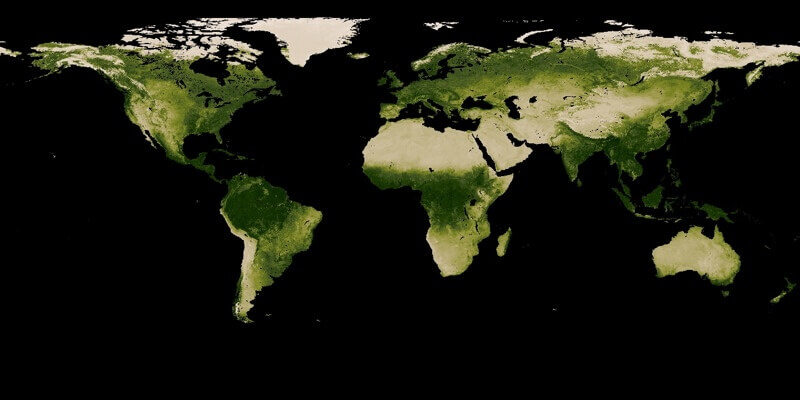
Map of global vegetation during October 2019. Image is from NASA’s Earth Observatory Vegetation. Visit for movies of how Earth’s vegetation changes month to month over a 19 year period.
Dark green areas show where there was a lot of green leaf growth; light greens show where there was some green leaf growth, and tan areas show little or no growth. Black means “no data.”
Snow and Ice
Snow and ice reflect quite a bit of the Sun’s radiation, which helps keep the region colder. Snow may or may not last through the summer. If it doesn’t, it has a short-term impact on the area, particularly delaying the onset of springtime warming due to the increased reflectivity of sunlight. If it lasts for years and becomes compressed into ice, its high reflectivity keeps the summertime temperatures cool too, increasing the chances that ice will last year-round. Cooler polar temperatures help sea ice to form and last longer into the summer, which also helps keep the poles colder.
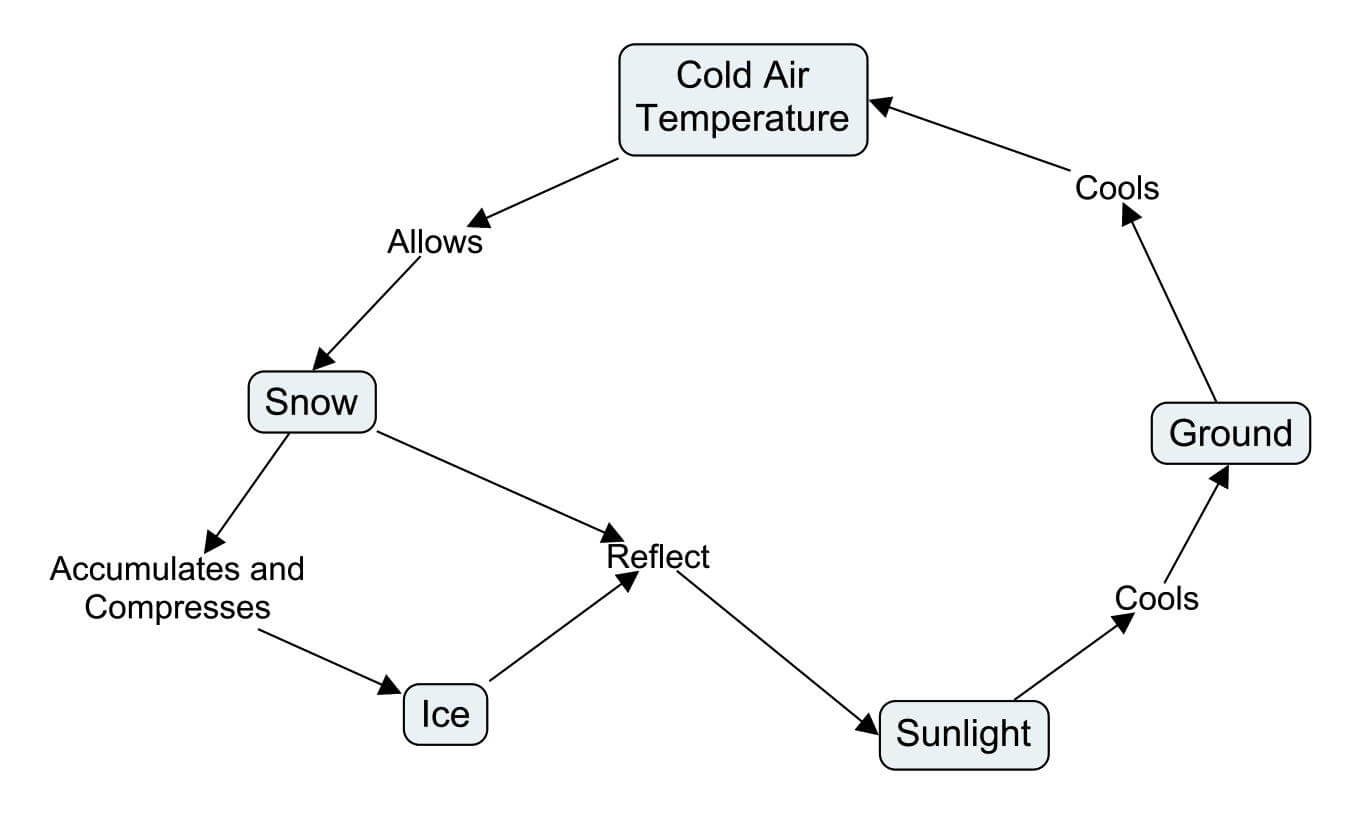
The positive feedback called the Arctic Amplification is driven by the presence or absence of highly reflective snow and ice.
Bodies of Water on Land
Lakes store precipitation and act similarly as oceans in moderating the local to regional climate. Due to its high specific heat, water changes temperature slowly as it gains/loses a tremendous amount of heat. Large bodies of water decrease the diurnal and seasonal temperature changes along the coast. Lakes are also a significant source of evaporated water over land, increasing the precipitation over land, helping to maintain this moderating effect on Earth’s energy budget. Combining both the stored heat and availability for evaporation, lakes create lake-effect snows during the late fall to early winter.
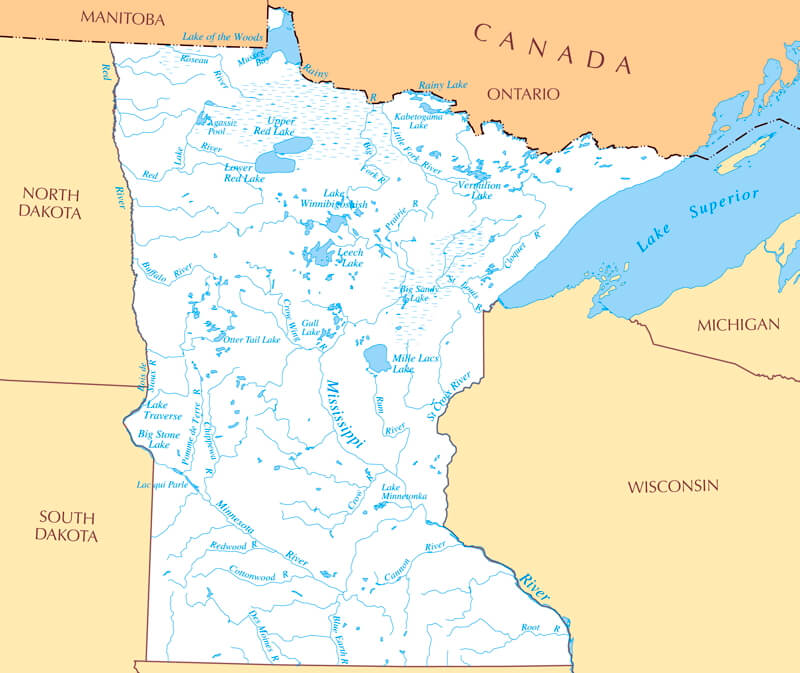
Minnesota is known as the Land of 10,000 Lakes. It would be very different without precipitation falling on the state! The map is from Maps of the USA.
Precipitation and Global Circulation Cells
Due to the consistently intense solar warming of the tropics, the global atmospheric circulation cells help transport the warmer air toward the poles. But precipitation at the rising portions of the cells adds the latent heat of condensation to the poleward moving air. Water has the highest latent heat of condensation and evaporation of any natural substance, meaning we have the most potent material to help warm the higher latitudes through precipitation.
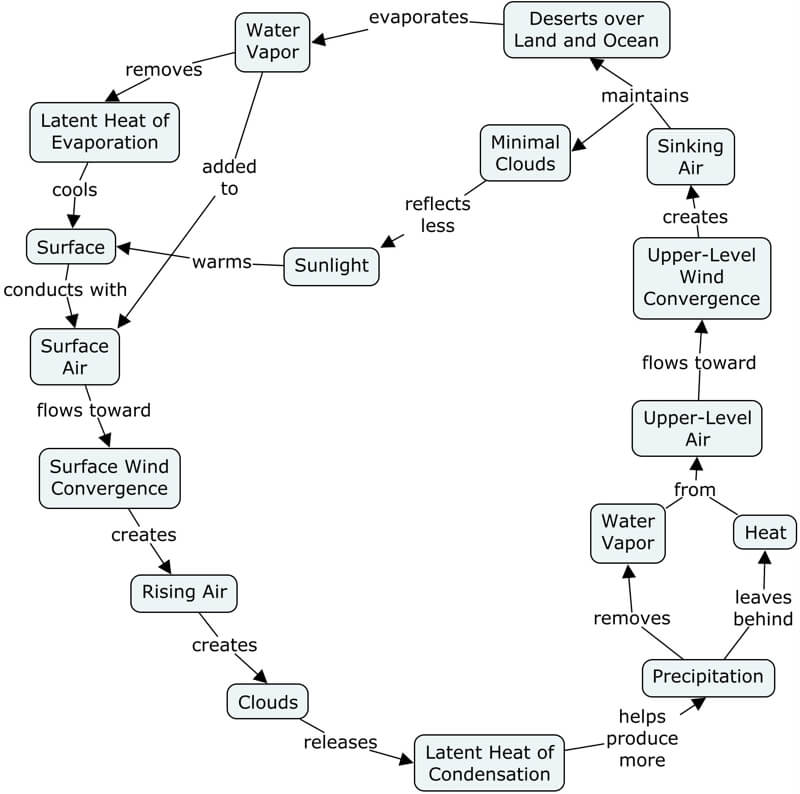
Nearly 25% of the solar energy absorbed by the Earth’s surface leaves it through evaporation. When water vapor condenses, it heats the surrounding air, and precipitation removes water from the atmosphere so the majority of the heat remains in the air. The added atmospheric heat is a primary mechanism for transporting heat away from the tropics to higher latitudes.
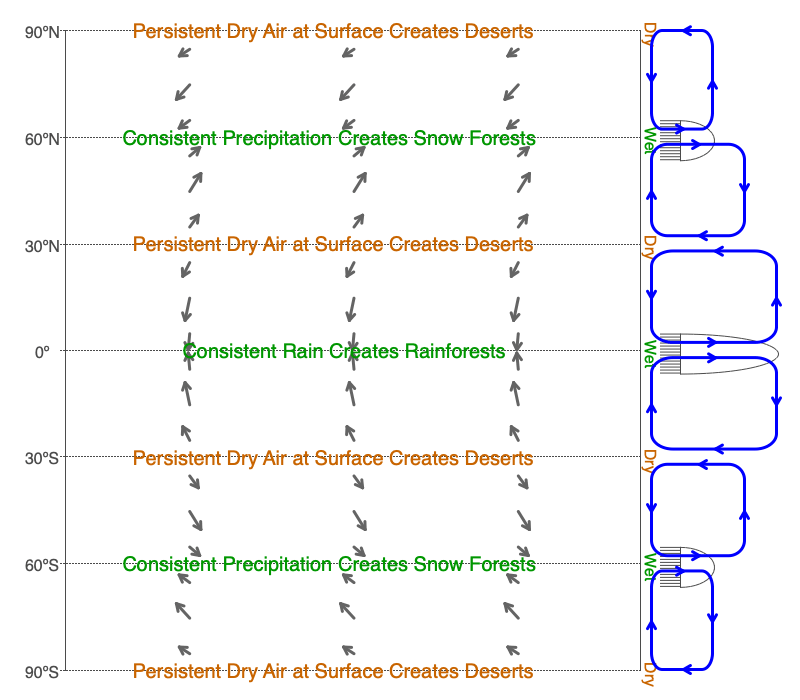
The global atmospheric circulation cells produce bands of deserts and vegetation that stretch across the globe (above). The concept map shows how these circulation cells and the resulting precipitation patterns affect the Earth’s energy budget.
The latent heat of condensation released in precipitation produced in the tropics and roughly 60º latitude from the Equator add tremendous amounts of heat to the air that eventually travels to the poles. Without this additional heat, the higher latitudes would be significantly colder, and without the increased evaporation of water in the tropics keeps the lower latitudes considerably warmer. The clearer skies in the help offset a portion of the evaporative cooling, particularly in the tropics.

0 Comments